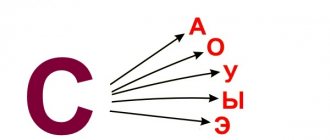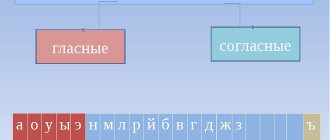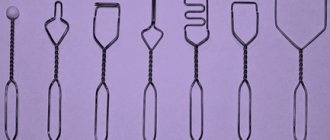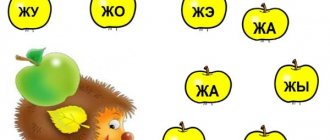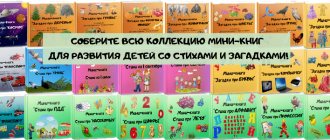Stage 1. Breathing training
Articulation gymnastics involves breathing training, practicing lip and tongue movements. For her, parents can use generally accepted speech therapy games, or they can come up with similar ones themselves. To interest a preschooler, you can involve him in preparing such games: cut out snowflakes, propellers for airplanes, boats, and colorful autumn leaves from light paper. The main thing is that the adult himself is passionate about the process, then the child will also perform the exercises with interest.
Exercises for breathing development
- “Kick the ball into the goal”, a game of unusual football. A gate is built in the center of the table and cotton “balls” are made. Players from both sides blow on cotton balls so that they fly into the goal. The adult monitors the child’s correct articulatory actions: a wide smile, tongue on the lower lip.
- "Snowflakes on the nose." Invite the preschooler to blow a cotton ball off his nose using the correct movements of the jaw: a wide smile, tongue on the upper lip, blow so that the ball flies up.
- The games “Blizzard”, “Leaves are Flying”, “Ships”, “Planes” are played in the same way.
The lack of pronunciation of all sibilants (Ш, Ж, Ш, Ш) is called sigmatism, which is similar to the sigmatism of sibilants (S, 3, C). This is explained by the fact that hissing and whistling have a common method of formation, in which a directed stream of air passes through a gap, along a groove located along the middle of the tongue.
The types of sigmatism are the same as in whistling people.
Interdental-lateral sigmatism - the tip of the tongue falls between the front teeth, and one edge of the tongue (right or left) breaks away from the molars, causing the entire tongue to turn to one side.
Lateral sigmatism - both edges of the tongue (or one) are torn away from the molars, causing a gap to form between the edge(s) of the tongue and the molars. Air rushes into the resulting gap, and the tip of the tongue rests on the palate, which produces an unpleasant squelching sound.
Labial-dental sigmatism - the lips protrude strongly forward. The upper incisors are pressed against the lower lip, forming a gap with it, where the air flow rushes. The tongue does not take part in the formation of sound; a sound close to F is heard.
Buccal sigmatism - the tongue lies passively on the floor of the mouth. The air inflates both cheeks.
Softened sound Ш - as a rule, softened pronunciation of the sound Ш occurs when it is lower articulated or as a result of the position of the tip of the tongue being too close to the front teeth.
Nasal sigmatism (or partial nasality) - a defect occurs if, while pronouncing Ш, the soft palate drops and air enters the nasal cavity.
The replacement of the sound Ш with other sounds (for example, S, T, etc., both correctly and incorrectly articulated) is called parasigmatism and refers to a specific defect.
PRODUCING THE SOUND SH
If a child has correct articulation of the sound S or has mastered its pronunciation, producing the sound Ш is not difficult.
1. It is best to place the sound Ш from the sound S. To do this, invite students to pronounce S (long sound s-s) or the syllable SA and at the moment of pronouncing, lift its tip of the tongue with a spatula, probe or finger by the upper teeth, onto the alveoli. Instead of S or SA, Sh or ShA is heard. Focusing the child’s attention on the upper position of the tip of the tongue (make sure he doesn’t stick his tongue into the roof of his mouth!), invite him to listen to what happened: “I said SA, but what happened?”
2. It is easy to set the sound Ш from the sound Р by slowing down the vibration of the tip of the tongue with mechanical assistance (probe). You can stop the “rolling” of the sound R, for example, with the word “stop!”, suggest holding articulation and remember the place behind the upper incisors where the sound R was pronounced. At “this place”, behind the upper teeth, say “sa” and listen to what happened . The sound Ш can also be made from the whisper sound R.
3. In exceptional cases, you can make the lower sound Ш by moving the tip of the tongue back with a spatula at the moment of pronouncing the long sound S - s-s. The delivered sound is fixed in syllables, words and is automated in individual phrases, sentences and texts.
Normal installation of the organs of articulation when pronouncing the sound “SH”.
- The tip of the tongue in the shape of a “cup” is raised to the front of the palate (at the alveoli);
- The lateral edges of the tongue are adjacent to the upper molars;
- The muscles of the tongue are not too tense;
- The lips are rounded and pushed forward in the shape of a “horn”;
- There is a small gap between the teeth;
- The air is exhaled evenly in the middle of the tongue;
- A warm stream of air is felt on the palm brought to the mouth.
- The voice motor is not working.
Lessons on making the sound “sh”
Staging the sound sh during speech therapy exercises can be done using different methods:
- From "s".
- From "t".
- From "r".
- And even from “a, uh, s”
Staging according to the method of Balova O.I.
Proper production of sounds
The most common way to correctly produce the “sh” sound is the “s” method. It is used when there are no defects or problems with the speech apparatus. It is also important that the whistling sound is not pronounced. The baby first begins to pronounce “s”, releases air, and then tenses his tummy a little more when exhaling. This produces hissing. You can also try pressing lightly on the baby's diaphragm (stomach) as you exhale to help the process. Facial expressions should not change, there can be no tension!
Note ! Difficulties in pronouncing sibilants can arise due to improper speech breathing, problems in speech hearing and the individual structure of the frenulum. Therefore, you should first identify the presence of these issues and visit specialists. If they are absent, proceed with sound production with a speech therapist.
From “t” in speech therapy, a diagnosis is made for interdental sigmatism of a child. First, the baby is taught to touch the upper teeth, and then very slowly pronounce the correct sound from “t”.
From “r” the setting is performed only if there is a confident “r”. “R” is pronounced quietly, almost in a whisper, the exhalation pressure decreases - it turns out “sh”.
For vowels, the production of “sh” can be done at home, since it does not require the presence of a speech therapist. The baby pronounces vowels and raises his tongue to the sky with a special tool.
Sound Automation
Automation of “sh” occurs when working with syllables, words and sentences. For a more enjoyable pastime, you can buy special coloring books, pictures, cards or a drawing album, where you can draw illustrations with your child. The baby will draw and speak at the same time, thereby strengthening the skills.
Tasks starting with "sh", coloring book
The following activities are held in the form of a game:
- First, individual syllables are pronounced: sho-sha-shu-she-shi,
- Then the words are added: checker, highway, cones,
- And then you can move on to sentences, tongue twisters: Sasha walked along the highway and sucked on a dryer.
Modern theories and methods of speech development of children
Causes of poor sound pronunciation
According to speech therapy standards, correct pronunciation should be formed by middle preschool age. However, even older preschoolers experience diction disorders. Experts provide evidence that children find it most difficult to pronounce hissing sounds: sh, zh, ch, shch. Imperfect diction can manifest itself in incorrect pronunciation of a sound, replacing one with another (machine-masyn), or skipping it. Experts identify the main reasons for poor pronunciation. These include the structure of the speech apparatus, insufficient development of phonemic hearing, perception, and the attitude of parents.
Features of physiology
- inactivity of the articulatory apparatus;
- improperly formed bite,
- short frenulum of the tongue,
- high palate.
Immaturity of phonemic perception
- The preschooler does not distinguish individual sounds by ear and replaces them.
Adult misbehavior
- Give the baby a pacifier for too long, especially during the period when speech is developing (early age);
- prolonged use of a pacifier leads to the formation of a malocclusion, which affects the pronunciation of many sounds, especially hissing sounds;
- deliberate distortion of speech by adults in order, in their opinion, to become understandable to the baby;
- dissatisfaction with the preschooler’s diction and the requirement to speak clearly, without teaching correct articulation;
- possible hearing loss not noticed by parents.
Stage 2. Gymnastics for the articulatory apparatus
Lip exercises
To warm up your lips, you can use speech therapy exercises:
- “We’ll be surprised and laugh.” The preschool child alternately makes a wide and narrow tube with his lips. A wide tube is in the “o” state, a “narrow” tube is in the “y” state. Nothing is said out loud, only the lips work.
- "Smile tube" Alternately, the child smiles widely, then makes a movement with his lips like the sound “o”.
Tongue exercises
Classic exercises are also used to train the tongue:
- “Delicious jam”, in which the tongue licks the lower lip, now to the left, now to the right.
- For the exercise “The Horse Is Galloping,” you need to “click” your tongue, imitating the horse’s step.
- “Elephant – Frog”: the lips alternately imitate either an elephant’s trunk or a frog’s smile.
- “Funny swing”: use the tip of your tongue to reach the upper teeth, then move down to the lower teeth.
- “Tick-tock”: with the tip of your tongue, imitating the movements of a watch, move left and right at different speeds.
- “Paints”: “color the palate” with the tongue.
All exercises are performed up to 10 times, but it is necessary to ensure that the baby does not get tired and exercises with interest.
A preschooler will quickly master the correct pronunciation of sibilants if the preparatory stage is carried out clearly, so they should not be neglected. The duration of such classes will depend on the individual development of the child and the state of his articulatory apparatus. Experts advise extending them if improvement does not occur after three sessions.
How to properly work on developing sounds?
When setting up hissing sounds, the help of a speech therapist is undoubted. Only a specialist will professionally examine speech, identify violations and offer recommendations for correcting them in home exercises. This needs to be done as quickly as possible, since pronunciation problems interfere with children’s communication, slow down their preparation for literacy, and contribute to the emergence of related problems, for example, psychological complexes, which will have to be eliminated in the future.
Speech therapists note that often the problem when pronouncing hissing words is that the child cannot properly control the speech apparatus. That is why work on each sound must begin with articulatory gymnastics. It is performed using a mirror to see and understand the work of the jaw and oral cavity. In the future, this will have a positive effect on improving phonemic hearing, and therefore on sound pronunciation.
The first stage of working on hissing is preparatory, during which special exercises should be performed (for breathing, lips, tongue). They will help you practice precise movements of the articulatory apparatus and prepare to produce certain sounds. They are performed in the form of game exercises that are easy to do at home.
The order of setting hissing
If a child suffers from poor pronunciation of only a specific hissing sound (sh, ch, zh, sch), it is clear that work needs to be done on producing one sound. But, as a rule, preschoolers experience distortion in the pronunciation of several sibilants at the same time. Then it is important for parents to know which sound to start with first. Experts determine the appropriate order and warn that each sound must be played individually, starting with the most accessible, gradually moving on to more complex ones. According to speech therapists, the order of production of several sounds depends on the physiology of preschool children: first the hissing sh is placed, then zh, then ch and shch. However, there may be changes in the sequence of placement, since everything depends on individual characteristics, which only a specialist can determine.
